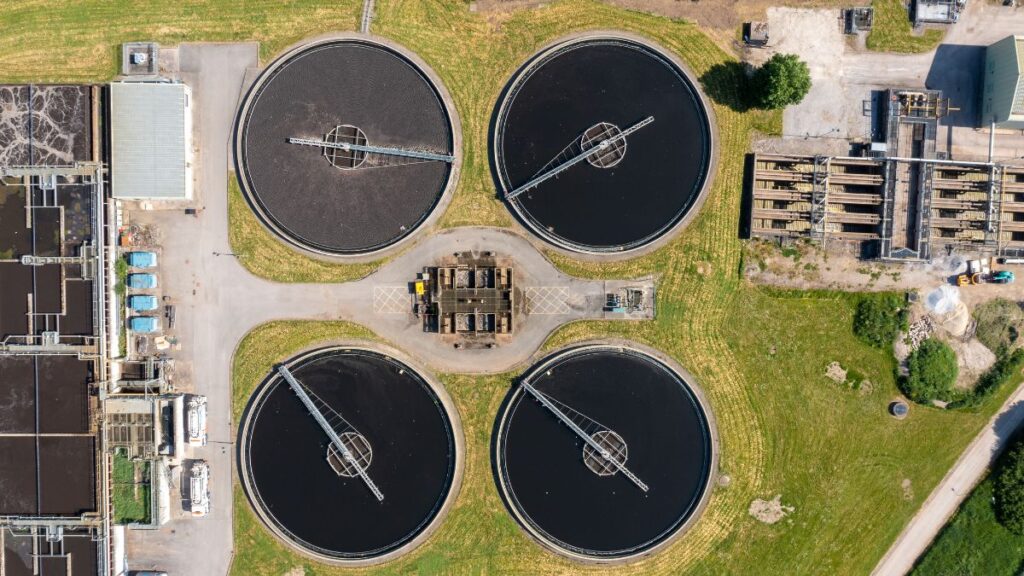Ammonia (NH3) is one of the nitrogen compounds often found in industrial and domestic wastewater. This compound can come from various sources, including food, textile, petrochemical, and household waste. Although it seems trivial, high ammonia content in wastewater can have serious impacts on the environment and human health.
According to various studies, ammonia in wastewater that is discharged without treatment can cause a decrease in oxygen levels in the water, which ultimately disrupts the balance of the aquatic ecosystem.
In addition, ammonia is also toxic to fish and other aquatic organisms, even in low concentrations. Not only that, the presence of ammonia in water that is reused for industrial processes or irrigation can cause damage to piping systems and industrial equipment due to corrosion.
Worrying Impacts: Environment and Health in Danger
If wastewater with high ammonia content is discharged directly into the environment without adequate treatment, the negative effects will be very broad. Here are some of the main impacts:
1. Decreases Water Quality and Disrupts Ecosystems
Ammonia can cause eutrophication, which is an increase in nutrient levels that encourage excessive algae growth. This can reduce oxygen levels in the water and cause mass deaths of fish and other aquatic organisms.
2. Toxicity to Aquatic Life
Even in low concentrations, ammonia can be toxic to fish and other aquatic organisms. Fish exposed to ammonia for a long time will experience stress, respiratory problems, and even death.
3. Corrosion of Industrial Equipment
In industrial processes, the presence of ammonia in water can cause damage to piping systems, boilers, and other equipment because of its nature which can accelerate the corrosion process.
Read Also: Scaling and Corrosion in Boilers: A Hidden Threat to Face
4. Health Impacts on Humans
Exposure to ammonia in water used for human consumption or industrial needs can cause various health problems, such as skin irritation, respiratory disorders, and digestive disorders if swallowed in large quantities.
With these various impacts, ammonia treatment in wastewater is no longer just an option, but an urgent need for industries that care about environmental sustainability and government regulations.
Effective Ways to Reduce Ammonia Content in Wastewater
Various methods can be applied to reduce ammonia levels in wastewater, depending on the characteristics of the waste and the needs of the industry. Here are some of the main solutions:
1. Biological Process: Nitrification and Denitrification
Biological process is one of the most effective methods in reducing ammonia levels in wastewater. This method involves two main stages:
- Nitrification: Nitrifying bacteria such as Nitrosomonas convert ammonia to nitrite, then Nitrobacter converts nitrite to nitrate.
- Denitrification: In this stage, denitrifying bacteria convert nitrate to harmless nitrogen gas and release it into the atmosphere.
2. Chemical Process: Chemical Precipitation and Oxidation
For industries with very high ammonia content, chemical methods can be an alternative solution. Some of the techniques used include:
- Chlorination: This process uses chlorine to oxidize ammonia to nitrogen gas.
- Precipitation with Magnesium Ammonium Phosphate (MAP): Ammonia reacts with magnesium and phosphate to form struvite crystals that can be precipitated and removed from wastewater.
3. Physical Process: Ammonia Stripping
The ammonia stripping method is carried out by increasing the pH of the wastewater using lime or soda ash, then flowing air into the system to evaporate the ammonia from the water. This method is very effective for wastewater with high ammonia concentrations.
4. Use of Filtration and Adsorption Systems
Several types of filtration media such as zeolite and activated carbon can be used to absorb ammonia from wastewater. This technique is often used as a complement to other methods to achieve optimal results.
5. Combination Solutions: Integration of Various Methods for Maximum Efficiency
To obtain optimal results, many industries apply combination solutions, namely combining several of the above methods in one treatment system. For example:
- Combination of Nitrification-Denitrification with Filtration: Biological processes can be combined with filtration media such as zeolite to increase the effectiveness of ammonia removal.
- Ammonia Stripping followed by Chemical Oxidation: The stripping method can be used to reduce large amounts of ammonia before chemical oxidation is carried out to ensure a cleaner end result.
- MAP precipitation before biological process: By precipitating ammonia in the form of struvite, the biological load in the nitrification-denitrification process can be significantly reduced.
Read Also: Why is My Cooling Tower Experiencing Biofouling?
Why Choose Lautan Air Indonesia?
As a company with more than 40 years of experience in the field of water treatment, Lautan Air Indonesia offers a variety of the best services and solutions to help industries deal with ammonia problems in wastewater. Our advantages include:
- Advanced technology and customer-based solutions
- Expert team with extensive experience in the field of wastewater treatment
- Availability of high-quality chemicals and filtration media
- Consulting services, system design, to implementation and maintenance
If your company faces challenges in managing ammonia content in wastewater, Lautan Air Indonesia is ready to be a trusted partner in providing efficient and environmentally friendly solutions.
Don’t let the problem of ammonia in wastewater hinder your company’s operations and environmental compliance. Contact Lautan Air Indonesia now to get the best solution that suits your industry needs.
With the right solution, we can maintain environmental sustainability while increasing the efficiency of industrial operations. Together with Lautan Air Indonesia, realize better wastewater treatment!



